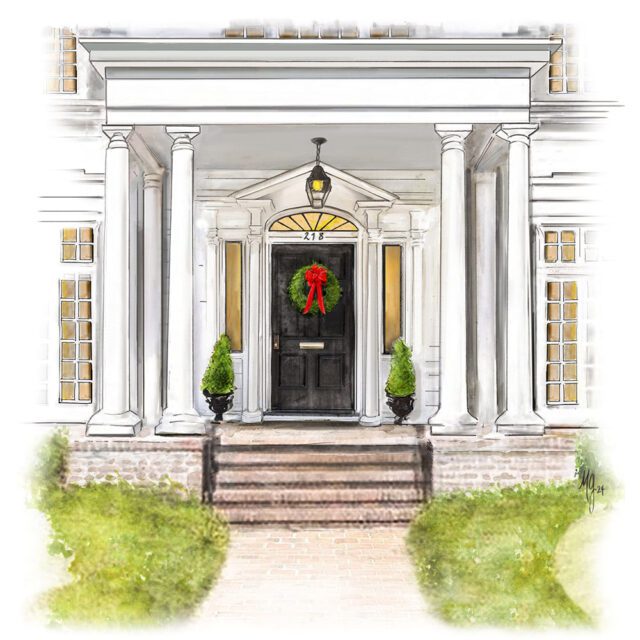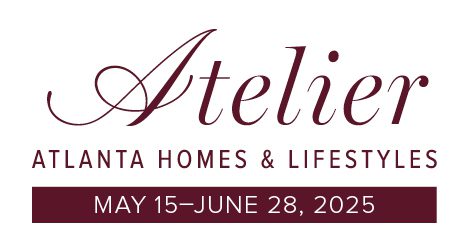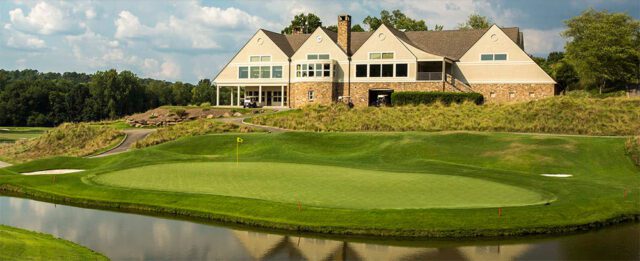Tucked into the Heart of Midtown with Skyline Views, Historic Ansley Park Looks Toward the Future
Atlantans are committed to upholding and improving upon the 120-year-old neighborhood's integrity

It’s the dichotomous nature of Ansley Park that makes this 120-year-old neighborhood so special. It’s tucked mere steps from the bustling Midtown business district and many backyards have dramatic skyline views, yet it feels secluded and rich with green space. Based on the principles espoused by landscape architect Frederick Law Olmsted, the 275-acre neighborhood was intentionally designed so that no home is more than a 10-minute stroll from one of 14 parks. While developer Edwin Ansley’s vision included wide, granite-curb-lined curvilinear streets, pedestrian connectivity has always been a focus and defining characteristic of this historic in-town neighborhood. Ansley Park residents enjoy year-round community programming ranging from dining clubs and poetry readings, to an annual Tour of Homes and Art in the Park festival.
History
Edwin Ansley’s concept for the neighborhood included a social component, leading him to break ground on a 45-acre golf club for the community in 1910, now known as the thriving, private Ansley Golf Club with a five-year waitlist for membership. Additionally, Ansley Park Civic Association (APCA) was founded in 1915 as a social club, and evolved into an organization of engaged citizens committed to protecting the neighborhood. In what would become a defining move for Ansley Park’s destiny, in 1964 the APCA hired renowned urban planner Leon Eplan of Eric Hill Associates to draft a long-range neighborhood plan to uphold the neighborhood’s integrity, while also improving upon it. In 2011, Ansley Park was named one of the 10 Best Neighborhoods in the United States by the American Planning Association, an honor that undoubtedly stemmed from the leadership of Eplan and the people he inspired to continue the preservation of this special enclave.
$998
Highest price per square foot (for sales in last 12 months, single-family homes)
$2,181,000
Average sale price (for sales in last 12 months)
30%
Parks and greenways making up the neighborhood
3,646
Average square footage (for sales in last 12 months, single-family homes)
Future
The neighborhood plan created by Eplan in the 1960s continues to guide the vision to maintain and enhance the historic neighborhood that has prospered amidst 120 years of growth and expansion in the Midtown business district. In November, the APCA launched a new Ansley Park Neighborhood Conservation Study to address a range of issues including traffic, parking, and pedestrian and bicycle safety within and adjacent to the neighborhood, as well as land use and development, preserving vital green spaces and upgrading infrastructure. The study will be submitted to the City in early 2025. “While many of these issues are not new, we do need an updated neighborhood plan that fully addresses current conditions and explores how we can best prepare the neighborhood to face the next 120 years,” says Derrick Brown, current APCA president.
“Ansley Park is a little jewel box in the middle of Atlanta. I admire the historic homes, large old trees, and mature landscaping, plus the beautiful parks with streams and wildlife like owls, hawks, and foxes. It’s the best of both worlds and the location can’t be beat.”
—Designer and Ansley Park Resident Don Easterling
If you know, you know
From 1924–1967, 205 The Prado in Ansley Park was home to the Governor’s Mansion and 12 Georgia governors. Developer Edwin Ansley built the “Granite Mansion” for himself in 1910, designed by architect (and fellow Ansley Park resident) A. Ten Eyck Brown. Unfortunately, the house fell into disrepair and was razed in 1969, and a new governor’s residence was built on West Paces Ferry Road.
Big Brag
Ansley Park was added to the National Register of Historic Places in 1979—take a tour through the neighborhood to spot a range of housing types and impressive architecture by some of Atlanta’s most famous architects.
A. Ten Eyck Brown:
100 17th Street, 128 17th Street
Neel Reid:
17 Inman Circle, 109 Peachtree Circle, 186 15th Street,
1 South Prado, 262 The Prado,
230 The Prado, 218 15th Street
P. Thornton Marye:
108 17th Street, 78 Peachtree Circle, 31 Peachtree Circle, 31 Lafayette Drive
The 1913 Italianate-style original residence of Fox Theatre architect P. Thornton Marye was listed for sale in October for $3,595,000—located at 31 Lafayette Drive, the four-bedroom stucco home overlooks Winn Park.
Phillip Trammel Shutze:
The Villa, 200 Montgomery Ferry Drive
If there were a Mascot
A Great Horned Owl, a species equally at home in the city or forest (or golf course).










